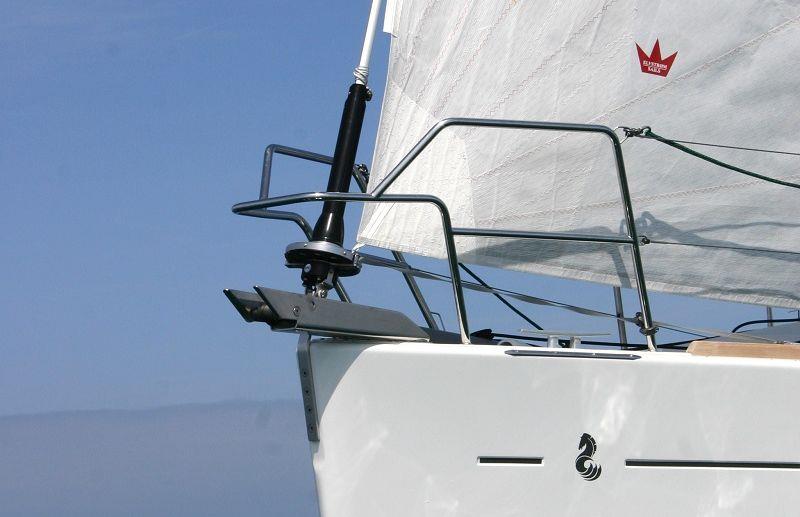
What Information Do I Need to Provide for a Complete Genoa Reefing System Specification?
by Kerri Robson 8 Jul 2019 08:00 UTC

Facnor FlatDeck Furling System © Facnor
So, you're in the market for a new genoa reefing system... either your existing furling unit is extremely old - and spare parts aren't available any more - or you're choosing to switch from a forestay with hanks for more comfortable cruising.
If you belong to the latter, you might be a bit confused about what information you need to relay to the supplier (upffront.com!) in order to be matched with your perfect furling system.
Although some manufacturers can provide a ball park furler suggestion based on boat size, the following pieces of information are the primary requirements to find your ideal furling solution.
Forestay Wire Diameter
- The most important of them all! To choose the correct furler, your supplier needs to know the diameter of your forestay and the material it is made from - for example, wire, rod or Dyform.
- This is important as a rod (commonly used for racing) or Dyform forestay (high-performance wire!) may have a smaller diameter, but greater strength than a wire forestay.
- You also need to decide whether you want to keep the old forestay or not. In a lot of cases it can be possible to have your existing forestay modified or shortened to fit the new system - although some (for example, Seldén's Furlex) include a new wire as standard.
- Before you decided to re-use, you should have a professional rigger perform a safety check on the existing forestay, as fatigue can be hard to spot.
Forestay Length
- The length of your forestay will impact the number of foil sections required in your furling system.
- Make sure to double check the length included in the price of your furler - most manufacturers provide a standard number, but additional foil sections may need to be bought to achieve your desired length.
Drum Height
- When choosing your new furling system, it is important to consider the position of the drum - high, or low?
- The performance option, a lower drum will allow the sail to have a longer luff length = more sail area.
- In comparison, a higher drum will raise the foot of the sail and provide better visibility under the genoa. This option is often chosen by cruising sailors due to safety considerations.
- Drum heights can be varied by choosing either short or long link plates which connect the drum to the deck chainplate.
Turnbuckle Width
- Not normally an issue, but it is important to check the width of your turnbuckle, to ensure it will fit inside the furling drum.
- If your turnbuckle is too wide, changing the turnbuckle for one with a narrower body might be required.
Clevis Pin Diameters
- When specifying a furling system, it is generally assumed that the forestay diameter will match industry standard clevis pin diameters in the boat chainplate and the mast tang.
- Whilst in most cases they are fine, rigging and masts get changed over time and these can sometimes be mismatched, which can lead to complications.
- Although not required to obtain the right price or specification of the drum, it is important to double check the pin diameters before placing the final order.
- This is also a reason why it is NOT advised to 'size up' your furling system with the hope of increased power, strength or durability: it can result in significant, hidden cost increases due to fitting incompatibility.
Deck Chain Plate & Mast Tang Style
- Again, not necessary for the initial specification and budget stage, but prior to final order, it is important to provide information on the configuration of your bow chainplate and mast tang.
- Chainplates come in all different shapes and sizes however, the configuration will generally be one of two options:
- Nose (most common) - Single plate and requires a fork toggle interface
- Fork - Double plate & requires an eye toggle interface
- Hole diameter, orientation (fore & aft or lateral) and plate thickness / fork width are important dimensions to consider
- Remember: Pictures are worth a thousand words - take a couple of photos, they are invaluable!
Luft Tape Groove Dimensions
- Finally, different foil sections have different groove sizes to fit the genoa luff tape.
- Therefore you should also check/measure the diameter of your luff tape.
- This measurement shouldn't drive the specification choice for your furler - it is just something to have in mind in terms of comparing the overall costs.
- In most cases luff tapes will not be an issue, but if the correct furling system requires a luff tape change, this is a relatively quick / simple alteration for your sailmaker.
- If you are changing from a hanked headsail to a furling system, you should also discuss with your sailmaker the pro's and con's of re-using or replacing your existing sail.
Armed with your measurements, and now want to explore your furling system options? Browse our genoa reefing, or get in contact with us via our genoa reefing enquiry form for a tailored recommendation.